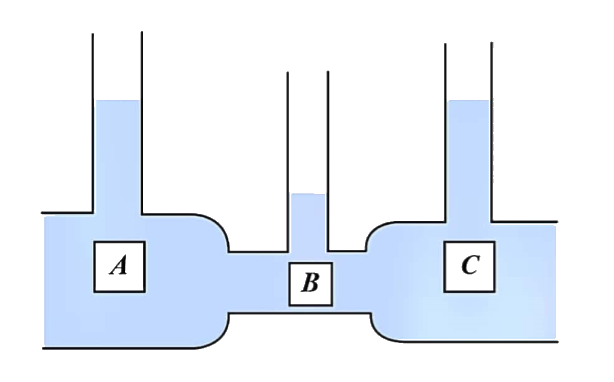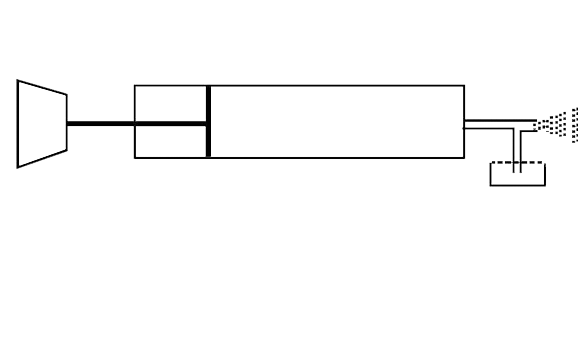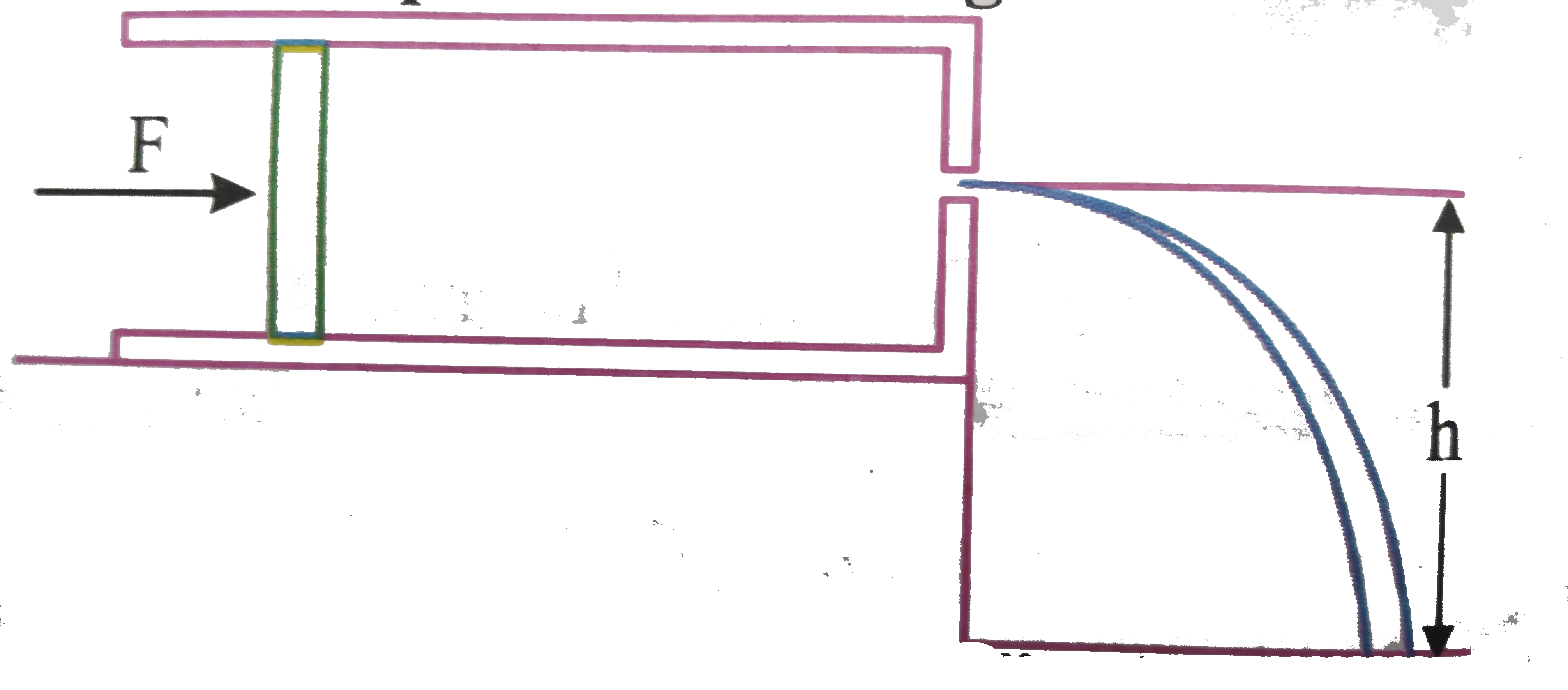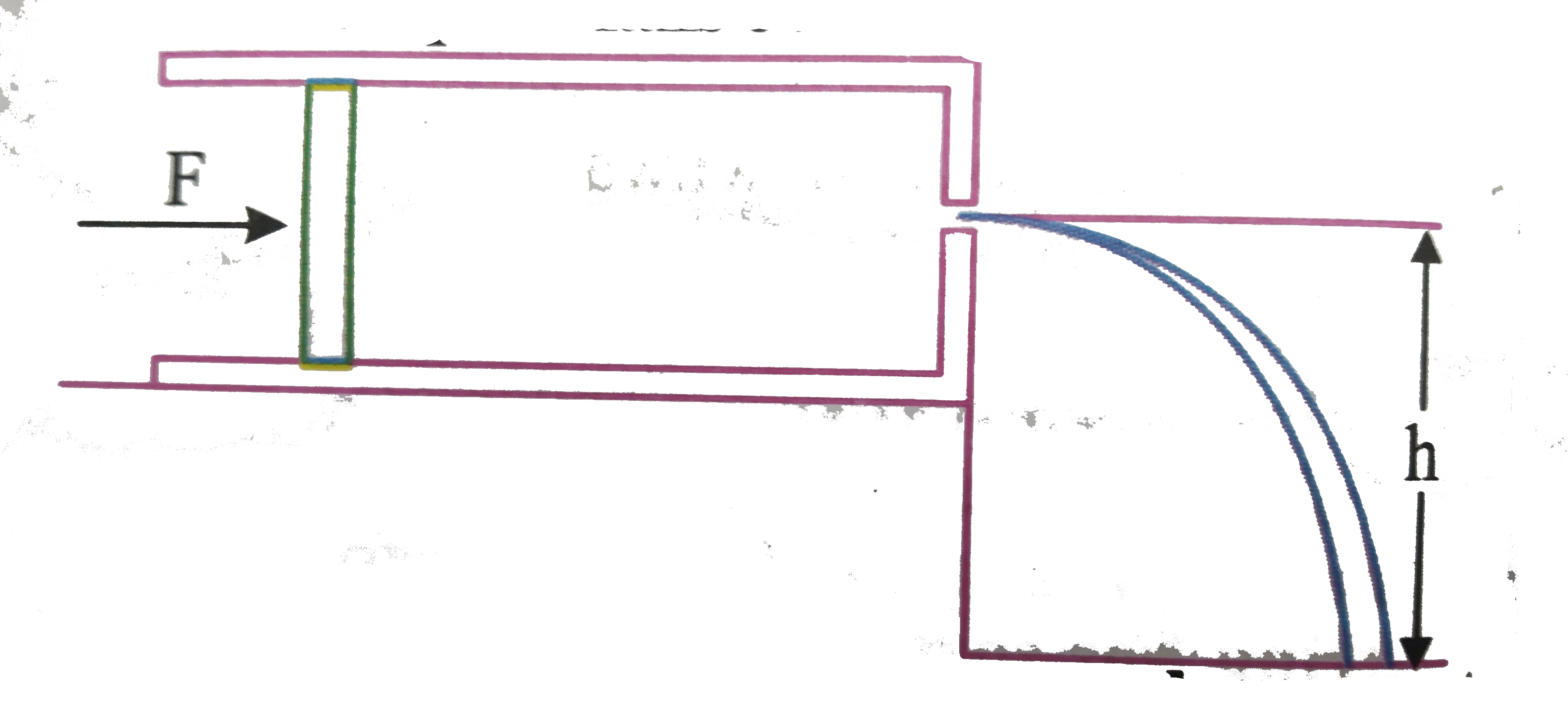A piston of a syringe pushes a liquid with a speed of 1 c, / sec . The radii of the syring tube and the needle are R = 1 cm and r = 0.5 mm respectively . The velocity of the liquid coming out of the needle is

2 cm/sec
400 c,/sec
10 cm/sec
None of these
According to the equation of continuity ,
Av = av.
⇒v.=(A/a)v
where A=πR2anda=πr2
⇒v.(Rr)2v=(1cm0.05cm)2(1cm/sec)=400 cm/sec

Topper's Solved these Questions
- BOOK - FIITJEECHAPTER - FLUID MECHANICS EXERCISE - LINKED COMPREHENSION TYPE2videos
FLUID MECHANICS
- BOOK - FIITJEECHAPTER - FLUID MECHANICS EXERCISE - LINKED COMPREHENSION TYPE I1videos
FLUID MECHANICS
- BOOK - FIITJEECHAPTER - FLUID MECHANICS EXERCISE - SOLVED PROBLEMS (SUBJECTIVE)10videos
FLUID MECHANICS
- BOOK - FIITJEECHAPTER - ELECTROSTATICSEXERCISE - Example14videos
ELECTROSTATICS
- BOOK - FIITJEECHAPTER - GENERAL PHYSICSEXERCISE - MATRIX MATCH TYPE3videos
GENERAL PHYSICS
Similar Questions
A non-viscous liquid is flowing through a horizontal pipe as shown in the figure. Three tube A,B and C are connected to the pipe. The radii of the tubes A, B and C at the junction are 2 cm, 1 cm and 2 cm respectively. It can be said that the
 View Solution
View SolutionA U-tube made up of two capillaries is held vertically and partially filled with a liquid of surface tension 50 dyne/crn. The diameters of bore of capillaries are 2 mm and 3 mm, respectively. What will be density of liquid if difference in menuscus levels is 1.30 cm. The angle of contact for that liquid ie zero degree.
View Solution
Knowledge Check
- Question 1 - Select One
A spray gun is shown in the figure where a piston pushes air out of a nozzle. A thin tube of uniform cross section is connected to the nozzle. The other end of the tube is in a small liquid container. As the piston pushes air through the nozzle, the liquid from the container rises into the nozzle and is sprayed out. For the spray gun shown, the radii of the piston and the nozzle are 20mm and 1mm respectively. The upper end of the container is open to the atmosphere.

If the piston is pushed at a speed of 5mms−1, the air comes out of the nozzle with a speed ofA(a) 0.1ms−1B(b) 1ms−1C(c) 2ms−1D(d) 8ms−1 - Question 2 - Select One
A spray gun is shown in the figure where a piston pushes air out of a nozzle. A thin tube of uniform cross section is connected to the nozzle. The other end of the tube is in a small liquid container. As the piston pushes air through the nozzle, the liquid from the container rises into the nozzle and is sprayed out. For the spray gun shown, the radii of the piston and the nozzle are 20mm and 1mm respectively. The upper end of the container is open to the atmosphere.

If the density of air is ρa, and that of the liquid ρl, then for a given piston speed the rate (volume per unit time) at which the liquid is sprayed will be proportional toA(a) √ρaρlB(b) √ρaρlC(c) √ρlρaD(d) ρl - Question 3 - Select One
A coaxial cylinder made of glass is immersed in a-liquid of surface tension S. The radius of the inner and outer surface of the cylinder are R1andR2 respectively . Height till which liquid will rise is (Density of liquid is ρ )
A2SR2ρgB2SR1ρgCS(R2−R1)ρgD2S(R2−R1)ρg

An ideal liquid of density ρ is filled in a horizontally fixed syringe fitted with a piston. There is no friction between the piston and the inner surface of the syringe. Cross-sectional area of the syringe is A. At one end of the syringe, an orifice is made. When the piston is pushed into the syringe, the liquid comes out of the orifice and then following a parabolic path falls on the ground.
With what velocity does the liquid come out of the orifice?View Solution
An ideal liquid of density ρ is filled in a horizontally fixed syringe fitted with a piston. There is no friction between the piston and the inner surface of the syringe. Cross-sectional area of the syringe is A. At one end of the syringe, an orifice is made. When the piston is pushed into the syringe, the liquid comes out of the orifice and then following a parabolic path falls on the ground.
With what velocity the liquid strikes the ground?View SolutionA liquid is flowing through a narrow tube. The coefficient of viscosity of liquid is 0.1308 poise. The length and inner radius of tube are 50 cm and 1 mm respectively. The rate of flow of liquid is 360cm3min. Find the pressure difference between ends of tube.
View SolutionA liquid rises to a height of 3.6 cm in capillary tube of radius r . If the radius of the capillary tube is made 0.75 r, then the height to which the liquid will rise in the capillary tube is
View SolutionA vertical U-tube contains a liquid of densityρ and surface tension T. if the radius of the meniscus of liquid in the limbs of the U-tube are R1 and R2 find the difference in the liquid column in the limbs.
View Solution

